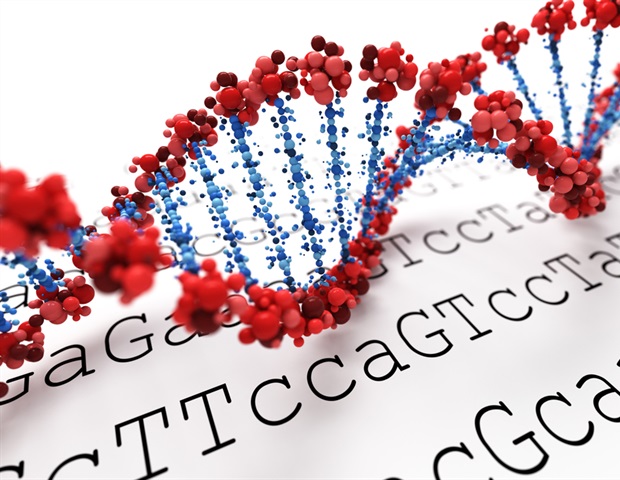A key query that continues to be in biology and biophysics is how three-dimensional tissue shapes emerge throughout animal improvement. Analysis groups from the Max Planck Institute of Molecular Cell Biology and Genetics (MPI-CBG) in Dresden, Germany, the Excellence Cluster Physics of Life (PoL) on the TU Dresden, and the Heart for Programs Biology Dresden (CSBD) have now discovered a mechanism by which tissues might be “programmed” to transition from a flat state to a three-dimensional form. To perform this, the researchers seemed on the improvement of the fruit fly Drosophila and its wing disc pouch, which transitions from a shallow dome form to a curved fold and later turns into the wing of an grownup fly. The researchers developed a way to measure three-dimensional form modifications and analyze how cells behave throughout this course of. Utilizing a bodily mannequin primarily based on shape-programming, they discovered that the actions and rearrangements of cells play a key position in shaping the tissue. This examine, revealed in Science Advances, exhibits that the form programming methodology could possibly be a standard solution to present how tissues type in animals.
Epithelial tissues are layers of tightly linked cells and make up the essential construction of many organs. To create practical organs, tissues change their form in three dimensions. Whereas some mechanisms for three-dimensional shapes have been explored, they don’t seem to be ample to elucidate the range of animal tissue kinds. For instance, throughout a course of within the improvement of a fruit fly known as wing disc eversion, the wing transitions from a single layer of cells to a double layer. How the wing disc pouch undergoes this form change from a radially symmetric dome right into a curved fold form is unknown.
The analysis teams of Carl Modes, group chief on the MPI-CBG and the CSBD, and Natalie Dye, group chief at PoL and beforehand affiliated with MPI-CBG, wished to learn how this form change happens. “To elucidate this course of, we drew inspiration from “shape-programmable” inanimate materials sheets, resembling skinny hydrogels, that may rework into three-dimensional shapes by means of inner stresses when stimulated,” explains Natalie Dye, and continues: “These supplies can change their inner construction throughout the sheet in a managed solution to create particular three-dimensional shapes. This idea has already helped us perceive how vegetation develop. Animal tissues, nevertheless, are extra dynamic, with cells that change form, dimension, and place.”
To see if form programming could possibly be a mechanism to grasp animal improvement, the researchers measured tissue form modifications and cell behaviors through the Drosophila wing disc eversion, when the dome form transforms right into a curved fold form.
Utilizing a bodily mannequin, we confirmed that collective, programmed cell behaviors are ample to create the form modifications seen within the wing disc pouch. Because of this exterior forces from surrounding tissues should not wanted, and cell rearrangements are the principle driver of pouch form change.”
Jana Fuhrmann, postdoctoral fellow within the analysis group of Natalie Dye
To substantiate that rearranged cells are the principle motive for pouch eversion, the researchers examined this by lowering cell motion, which in flip brought on issues with the tissue shaping course of.
Abhijeet Krishna, a doctoral scholar within the group of Carl Modes on the time of the examine, explains: “The brand new fashions for form programmability that we developed are linked to various kinds of cell behaviors. These fashions embody each uniform and direction-dependent results. Whereas there have been earlier fashions for form programmability, they solely checked out one kind of impact at a time. Our fashions mix each kinds of results and hyperlink them on to cell behaviors.”
Natalie Dye and Carl Modes conclude: “We found that inner stress introduced on by energetic cell behaviors is what shapes the Drosophila wing disc pouch throughout eversion. Utilizing our new methodology and a theoretical framework derived from shape-programmable supplies, we had been capable of measure cell patterns on any tissue floor. These instruments assist us perceive how animal tissue transforms their form and dimension in three dimensions. Total, our work means that early mechanical indicators assist set up how cells behave, which later results in modifications in tissue form. Our work illustrates rules that could possibly be used extra broadly to higher perceive different tissue-shaping processes.”
Supply:
Max Planck Institute of Molecular Cell Biology and Genetics (MPI-CBG)
Journal reference:
Fuhrmann, J. F., et al. (2024) Lively form programming drives Drosophila wing disc eversion.Science Advances. doi.org/10.1126/sciadv.adp0860.

0 Comments